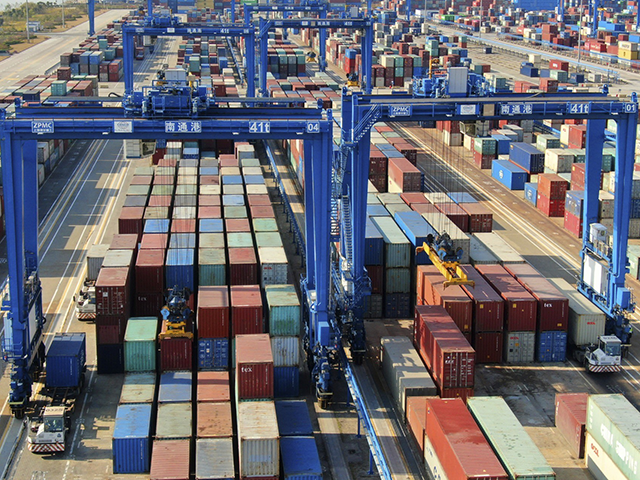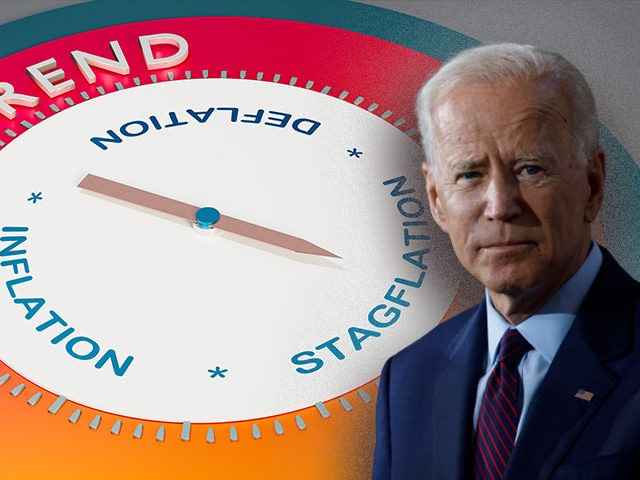The American people put points up on the board this week in their never-ending struggle against the experts and their politician clients.
The experts have been telling us for months that the economy was doing extraordinarily well once you look past the little problem of inflation. The American people, on the other hand, have been insisting that the economy is in the doldrums and that asking anyone to look past inflation is like asking Abraham Lincoln how the play went apart from being penetrated by John Wilkes Boothe’s projectile. The most recent Gallup poll found that 80 percent of Americans rated the economy either poor or only fair and 76 percent said the economy is getting worse.
The Democrats saw those numbers and decided they had a messaging problem. Wall Street’s economists forecast that the economy would slow to an annual growth rate of just over one percent or so. The range of projections was for growth of just 0.2 percent to 1.9 percent, according to Econoday’s survey.
On Thursday, the Bureau of Economic Analysis revealed that the Democrats have a reality problem and that Wall Street was wrong. The economy contracted at a 1.4 percent annual rate, the first time the economy has shrunk since the lockdown days of 2020. In other words, vox populi spoke truer than the vox electi.
A big part of the blame for the contraction goes to the massive increase of imports, which we warned about last night. Imports represent demand leakage from the U.S. economy, where incomes earned by Americans get spent out of the U.S. economy on foreign manufactured goods. This is why imports get subtracted from GDP, which is a measure of U.S. production. After decades of so-called free trade agreements, the U.S. economy is particularly vulnerable to import surges when our economy recovers at a faster speed than the rest of the world. In some ways, this is a kind of charity, whereby the U.S. acts as a steam engine for the global recovery and the rest of the world acts as the passenger cars being pulled behind us.

A container port is pictured in Nantong in eastern China’s Jiangsu province on December 6, 2021. (Chinatopix via AP)
The slower pace of inventory investment by businesses in the first quarter also held down growth. We’ve discussed a lot in this space how the rapid buildup of inventories at the end of last year was premised on a mistake for which we continue to pay the price. Businesses saw early holiday shopping as a sign of consumer strength when this was mostly consumption being pulled forward for fear of higher prices and inflation. When year-end holiday sales were disappointing, businesses had no choice but to slow the pace of growth. In the long run, that’s economically healthy; but for the first three months of the year, it was a drag on growth. What’s more, ongoing supply chain problems meant that some businesses–like auto dealers–could not add inventory even though demand was very strong.
Normally, a contraction would be expected to provide relief from inflation. Not this time. Consumer expenditures did not grow quite as much as predicted, but the details point to more inflation. Spending on durable goods jumped at a 4.1 percent annual rate. So much for the transition from goods to services. Final sales to domestic purchasers rose 3.7 percent. Business investment grew 9.2 percent as businesses snapped up equipment and intellectual property products. Offices and commercial space was an exception: structure investment by businesses fell for the fourth straight quarter.
Inflation accelerated. The personal consumption expenditure price index, the measure of consumer inflation that the Federal Reserve uses in its projections and targets, increased 7.0 percent, compared with an increase of 6.4 percent at the end of last year. If you strip out food and energy, inflation rose 5.2 percent. So much for the idea that these are Putin’s Price Hikes. A broader measure of inflation that counts all domestic purchases, by households and businesses, increased 7.8 percent, up from seven percent.
Since the definition of stagflation is below-trend growth and above-trend inflation, it’s clear that Biden has revived that economic nightmare from the 1970s — not that you would know it from the way the establishment media covered it. The New York Times, for example, went with this headline: “GDP Report Shows the U.S. Economy Shrank, Masking a Broader Recovery.” Got that? The reality of contraction is the mask. The narrative of “broader recovery” is what your betters think you should be paying attention to.
Twitter’s Fuzzy Math
Twitter’s first-quarter results were not quite as bad as the board capitulation to Elon Musk had led some to expect. The company added users but missed on revenue. Profits were in line with expectations but no better. That would count as a “mixed” result for Wall Street and probably send shares tumbling in the current market environment, which has been unforgiving to any results that do not beat official expectations.
One reason the board might have been eager to hand over the keys to Musk is that the company has been over-counting monetizeable daily active users for years. The company said that a feature that allowed individual users to run multiple accounts accidentally counted those accounts as individual users. This went on for more than three years. That’s an enormous failure of internal accounting controls that would have likely prompted shareholder lawsuits and perhaps even demands for management changes.


COMMENTS
Please let us know if you're having issues with commenting.